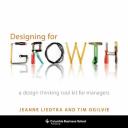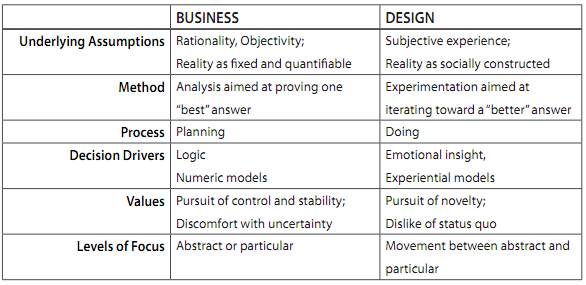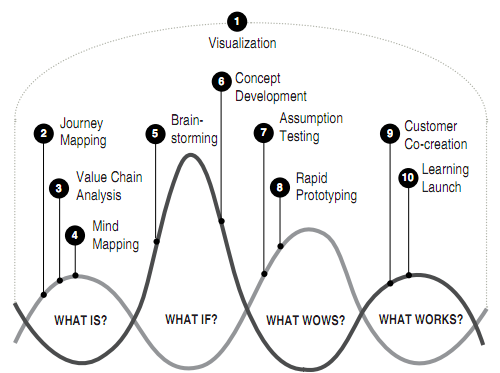Will Design Thinking Get Traction in Business?
Thursday, April 7th, 2011 Design thinking, like quality thinking, process thinking, systemic thinking, lean thinking and the other “think like this” movements before it, is knocking on business’s door. It promises everything from more insightful strategy, to higher levels of innovation, truly agile operations and planned organizational change that works.
Design thinking, like quality thinking, process thinking, systemic thinking, lean thinking and the other “think like this” movements before it, is knocking on business’s door. It promises everything from more insightful strategy, to higher levels of innovation, truly agile operations and planned organizational change that works.
Design thinking as an early-stage management innovation is in a state of disarray. But that’s natural. Basic questions about definitions, methods and even if it works dominate the conversation. And these are the questions that you must answer to get traction in business. And they must be answered in just the right way. What is it? How do I do it? How do I know it works?
Indeed, when you look at the history of management innovation there is a clear signature to those that get traction and those that don’t. A manifesto is required that provides answers to the three questions that are powerful, simple and easy to retell. A compelling position that declutters the conversation and readies the management mind for action. While there are many fine books on design thinking for business, none come close to being a manifesto.
Manifestos are of special interest to cognitive designers that study management innovation and social change. They have a design that moves the heart and extends the mind. So I am always on the lookout for manifestos anxious to understand their content and deconstruct their design and figure out what makes them tick.
 Take for example the fourth coming book -Designing for Growth: a design thinking tool kit for managers. It shows some signs of being a manifesto. I base that on reading the first two chapters and looking at the cover art. The authors are good at creating cognitive dissonance and then resolving it in creative synthesis. This changes thinking.
Take for example the fourth coming book -Designing for Growth: a design thinking tool kit for managers. It shows some signs of being a manifesto. I base that on reading the first two chapters and looking at the cover art. The authors are good at creating cognitive dissonance and then resolving it in creative synthesis. This changes thinking.
For example, in the section on: Design and Business: A Match Made in Heaven – or Hell, they present a contrast table:
Runs deep and to the point but does not overload. They also present a 4-step method and 10 tools which they build up graphically over time with a grand finale of:
While too complex to share easily the wave form and some of the catch phrases (e.g. what WOWs) could vector.
Interested to hear from readers that are aware of manifestos on design thinking or have insights into the cognition of why they work.

